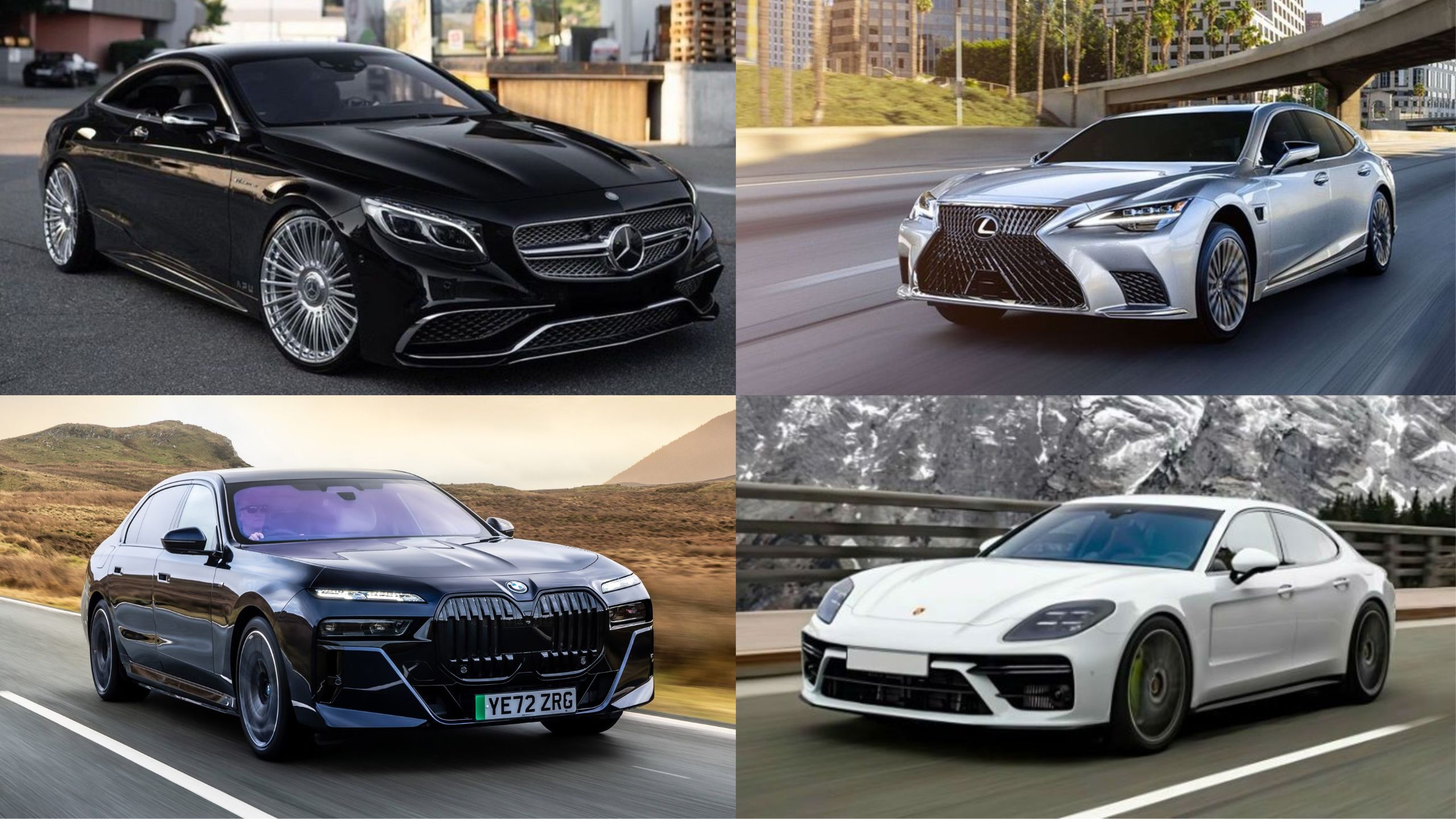Luxury automobiles represent the pinnacle of automotive engineering, where craftsmanship meets cutting-edge technology.
While many cars depreciate rapidly, a select few stand out for their remarkable ability to maintain interior quality and structural integrity over time.
This comprehensive guide explores ten luxury vehicles that have consistently impressed automotive experts and long-term owners with their exceptional build quality and resilient interiors.
The criteria for selection go beyond mere aesthetic appeal. These vehicles are evaluated based on multiple factors: material quality, precision of manufacturing, resistance to wear and tear, use of premium materials, innovative design, and real-world durability.
From meticulously hand-stitched leather to precision-engineered components, these cars represent investments that not only provide unparalleled driving experiences but also retain their luxurious feel and structural soundness for years, if not decades.
Factors like high-grade leather treatments, advanced sound insulation, rust-resistant frameworks, and thoughtful design contribute to their longevity.
Manufacturers invest significant resources in research and development to create interiors that withstand the test of time, using techniques ranging from advanced polymer science to traditional artisanal craftsmanship.
The following list represents a curated selection of luxury vehicles that exemplify automotive excellence, offering owners a blend of comfort, durability, and timeless sophistication.
1. Lexus LS
The Lexus LS stands as a paragon of Japanese engineering precision and interior durability. For decades, this flagship sedan has set the standard for long-lasting luxury, combining meticulous craftsmanship with exceptional material quality.
The interior is a testament to Lexus’s commitment to perfection, featuring hand-stitched semi-aniline leather that resists wear and maintains its pristine appearance even after years of use.
Advanced sound insulation techniques create a near-silent cabin environment, with specially designed acoustic glass and strategic padding that minimizes external noise.
The dashboard utilizes high-grade soft-touch materials that resist UV degradation and maintain their texture over time. Lexus employs a unique multi-layer painting process for interior trim pieces, ensuring that wood and metal accents resist scratching and fading.
The seats are engineered with memory foam and premium leather that adapts to the occupant’s body while maintaining structural integrity.
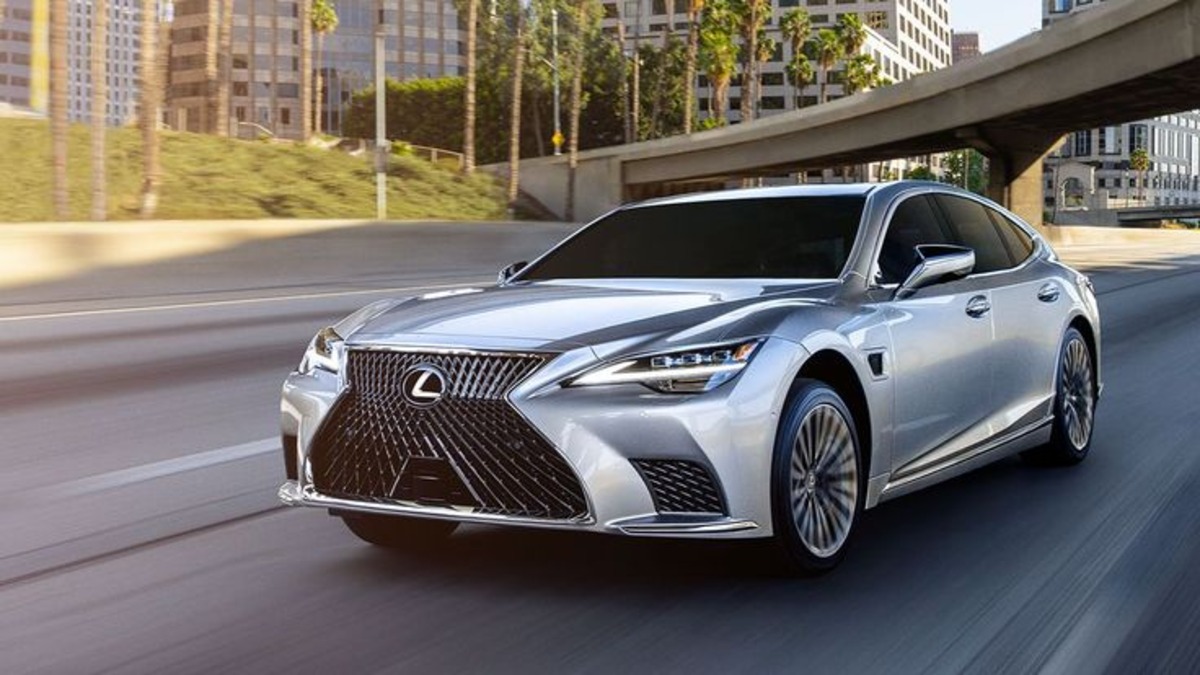
Advanced climate control systems prevent leather cracking, and the seat mechanisms are designed to withstand over 100,000 compression cycles.
Attention to detail extends to every component, from the precisely damped door closes to the smooth-operating electronic controls that feel as crisp after years of use as they did when new.
Lexus’s renowned reliability plays a crucial role in the LS’s interior longevity. The brand uses advanced corrosion-resistant materials and employs rigorous testing protocols that simulate decades of use.
Electronic components are designed with redundancy and protection against environmental factors, ensuring that screens, controls, and electronic systems maintain their responsiveness and reliability.
The cabin’s modular design allows for easier replacement of individual components, reducing long-term maintenance costs.
Careful material selection means that even high-touch areas like steering wheel grips, gear selectors, and center console surfaces resist wear, maintaining their premium feel and appearance.
Climate-controlled seats with advanced ventilation and heating systems are engineered to prevent leather degradation, ensuring comfort and aesthetic appeal for years.
Lexus’s commitment to long-lasting luxury is evident in every aspect of the LS’s interior, making it a benchmark for durability in the luxury automotive segment.
2. Mercedes-Benz S-Class
The Mercedes-Benz S-Class represents the pinnacle of German automotive luxury, with an interior that redefines durability and sophistication.
Each S-Class is crafted with a level of precision that transforms the cabin into a masterpiece of engineering and design.
The interior is a harmonious blend of cutting-edge technology and traditional craftsmanship, utilizing materials that are selected and tested to withstand years of use.
Mercedes employs a multi-layered approach to interior durability, starting with advanced material science.
The leather used in the S-Class undergoes a proprietary tanning process that increases resistance to UV rays, moisture, and physical wear. Hand-stitched leather surfaces are treated with protective coatings that maintain their suppleness and prevent cracking, even in extreme temperature conditions.
The dashboard and trim elements utilize innovative materials that combine aesthetic appeal with long-term durability.
Advanced polymer composites and metal alloys are carefully selected to resist scratching, fading, and structural degradation.
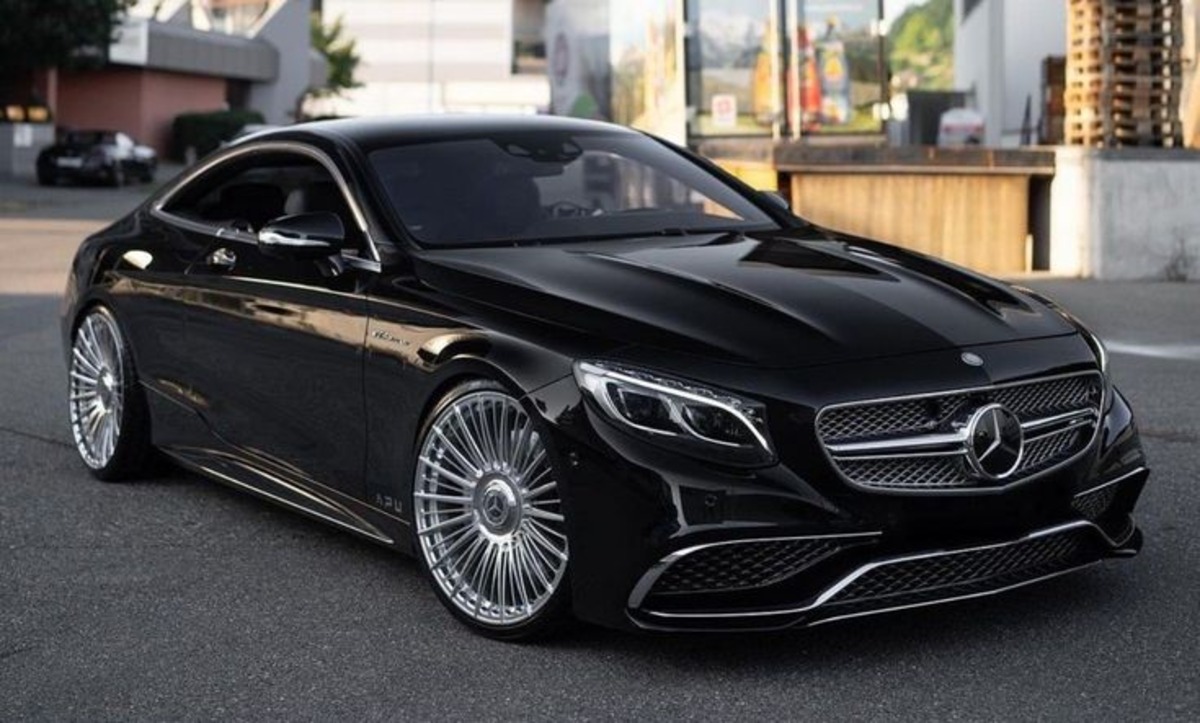
Mercedes-Benz’s engineers conduct extensive testing, subjecting interior components to simulated decades of use, ensuring that every surface maintains its premium feel and appearance.
Technological integration is seamless, with high-resolution displays protected by specialized glass that resists scratching and maintains clarity.
The electronic architecture is designed with redundancy and protection, ensuring that complex systems like the MBUX infotainment continue functioning flawlessly over time.
Mechanical components like seat adjustments and electronic controls are engineered to withstand over 50,000 operation cycles.
Climate control systems in the S-Class are particularly advanced, with humidity and temperature regulation that protects interior materials.
Seat mechanisms incorporate memory foam and adaptive cushioning that maintains structural support, preventing sagging and maintaining comfort.
The cabin’s acoustic engineering creates a sound-isolated environment that remains consistent throughout the vehicle’s lifetime.
Mercedes-Benz’s attention to thermal and mechanical stress is remarkable. Interior components are tested in environmental chambers that simulate extreme conditions, from Arctic cold to desert heat.
This ensures that every surface, from wood trim to electronic interfaces, maintains its integrity and premium feel.
The modular design philosophy allows for easier component replacement, extending the vehicle’s usable life. Each S-Class interior is a testament to Mercedes-Benz’s commitment to creating a luxury environment that feels timeless and enduring.
3. Porsche Panamera
The Porsche Panamera exemplifies German engineering at its finest, with an interior that blends sporty performance with extraordinary durability.
Unlike traditional luxury sedans, the Panamera’s cabin is a masterclass in integrating high-performance materials with long-lasting design principles.
Porsche’s meticulous approach to interior construction begins with material selection, utilizing aerospace-grade components and advanced composite technologies.
The leather used in the Panamera undergoes an intensive preparation process that goes beyond conventional treatment. Each hide is carefully selected, with imperfections removed and surfaces treated to resist UV damage, moisture, and physical wear.
The leather’s molecular structure is enhanced to maintain its original texture and resilience, ensuring that seats and trim remain pristine even after years of use and multiple climate conditions.
Porsche’s obsession with precision is evident in every interior component. The dashboard utilizes a combination of carbon fiber-reinforced polymers and high-grade aluminum alloys that resist temperature fluctuations and mechanical stress.
Each trim piece is manufactured with tolerances so tight that panel gaps are virtually imperceptible, creating a seamless and enduring interior aesthetic.
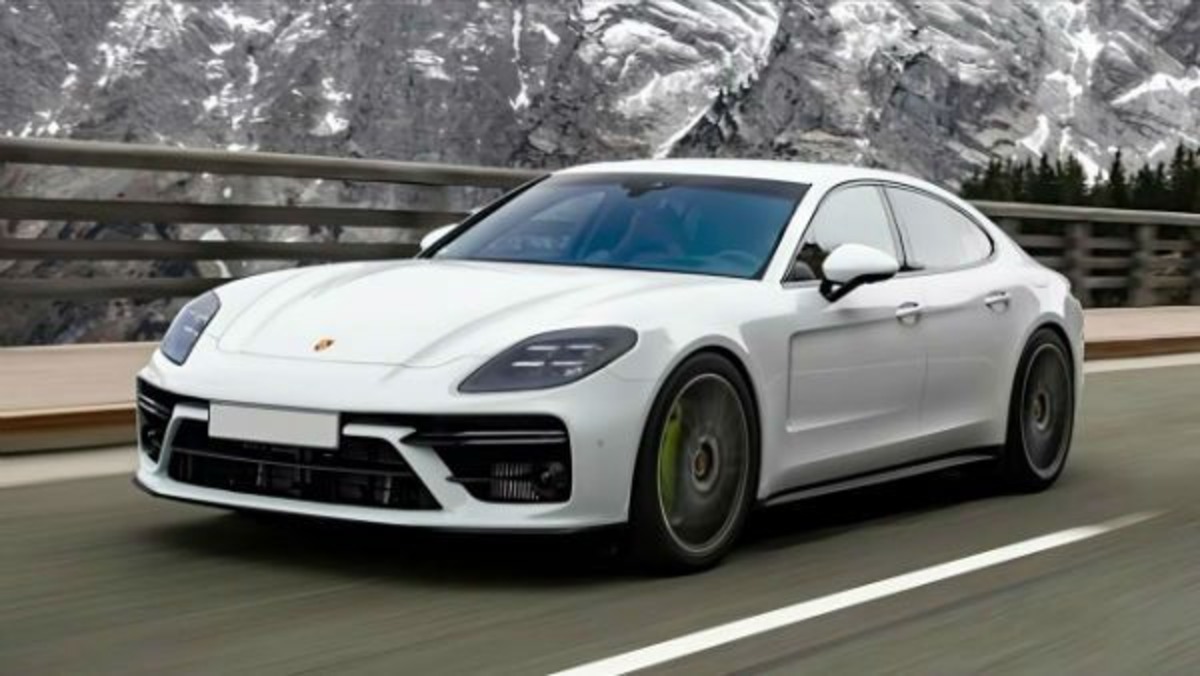
Technological integration sets the Panamera apart in terms of durability. The infotainment system features custom-designed displays with specialized glass that resists scratching and maintains optical clarity. Electronic components are housed in shock-resistant housings, protecting sensitive circuits from vibration and environmental stress.
The central control interface is engineered to withstand over 100,000 interaction cycles, maintaining responsiveness and tactile feedback.
Seat engineering is particularly remarkable, with multi-layer construction that combines memory foam, adaptive support materials, and advanced textile technologies.
The seat mechanisms utilize precision-machined components that maintain structural integrity, preventing sagging or mechanical wear.
Climate-controlled seat surfaces incorporate moisture-wicking technologies that protect both the leather and the underlying structural components.
Acoustic engineering in the Panamera creates an interior environment that remains consistent throughout the vehicle’s lifetime.
Multiple layers of sound-dampening materials, including specialized foam and vibration-absorbing compounds, ensure that the cabin remains quiet and free from rattles or structural resonances.
Porsche’s modular design philosophy allows for strategic component replacement, extending the vehicle’s usable life. Each interior element is designed with future maintenance in mind, using standardized connection points and easily accessible systems.
This approach ensures that the Panamera’s interior can be maintained in showroom-like conditions even after years of intensive use.
4. BMW 7 Series
The BMW 7 Series represents the pinnacle of German luxury sedan engineering, with an interior that epitomizes durability and sophisticated design.
BMW’s approach to interior construction combines cutting-edge material science with traditional craftsmanship, creating a cabin that withstands the test of time while providing unparalleled comfort and technological integration.
Material selection is the cornerstone of the 7 Series’ interior longevity. BMW employs a multi-layered approach to surface protection, using advanced nano-coating technologies that create an invisible protective layer on leather, wood, and metal surfaces.
This microscopic barrier resists UV radiation, prevents color fading, and maintains the original texture of interior materials.
The leather used in the 7 Series undergoes an extensive preparation process that goes beyond conventional treatments. Each hide is carefully selected and treated with a proprietary solution that increases molecular density, resulting in superior resistance to stretching, tearing, and environmental stress.
Climate-controlled seats incorporate advanced ventilation systems that prevent moisture accumulation, protecting both the leather and underlying structural components.
Technological integration is seamless and designed for long-term reliability. The iDrive system features custom-designed displays with specialized glass that maintains optical clarity and resists scratching.
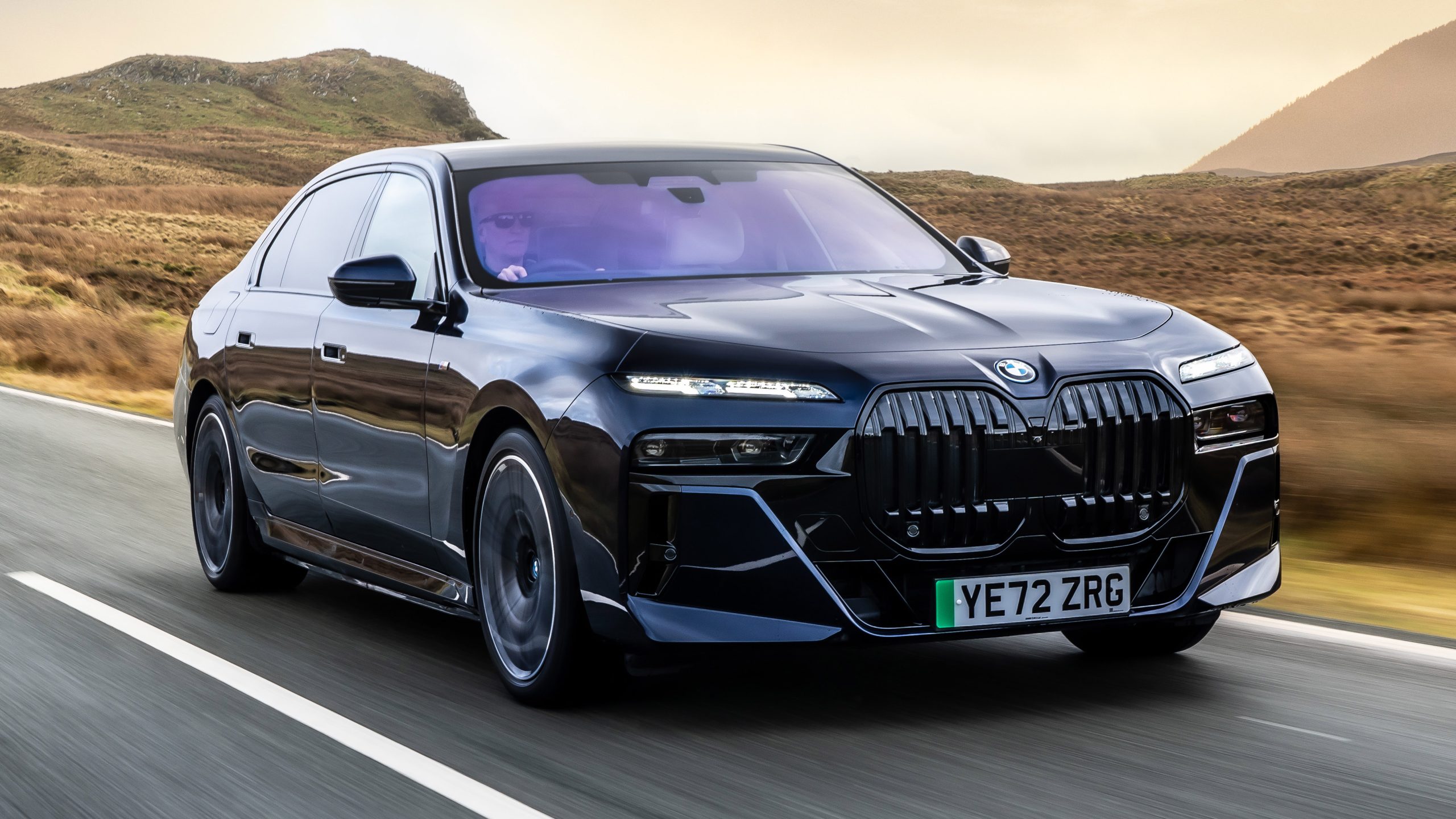
Electronic components are housed in precision-engineered housings that protect against vibration, temperature fluctuations, and electromagnetic interference. The entire electronic architecture is designed with multiple redundancy layers, ensuring consistent performance over decades of use.
Structural engineering extends to every interior component. The dashboard utilizes a combination of carbon fiber-reinforced polymers and magnesium alloys that provide exceptional strength while minimizing weight.
Precision manufacturing ensures that panel gaps remain consistent, preventing rattles and maintaining a premium feel even after extensive use.
Acoustic engineering in the 7 Series creates an extraordinary sound-isolated environment. Multiple layers of sound-dampening materials, including specialized foam and vibration-absorbing compounds, ensure that the cabin remains quiet under various driving conditions.
The windows use multi-layer acoustic glass that maintains sound isolation properties throughout the vehicle’s lifetime.
BMW’s modular design philosophy allows for strategic component replacement, extending the vehicle’s usable life. Each interior element is designed with future maintenance in mind, using standardized connection points and easily accessible systems.
This approach ensures that the 7 Series’ interior can be maintained in near-original condition even after years of intensive use.
Also Read: 12 Cars That Have Shockingly Low Depreciation Over Time
5. Audi A8
The Audi A8 stands as a technological masterpiece of interior engineering, representing the pinnacle of German automotive luxury and durability.
Audi’s approach to interior construction transcends traditional manufacturing, incorporating advanced materials science and precision engineering to create a cabin that defies the conventional boundaries of wear and longevity.
Material selection begins with an almost obsessive attention to detail. The leather used in the A8 is sourced from carefully selected hides, undergoing a multi-stage treatment process that goes far beyond standard automotive upholstery.
Each leather surface is treated with a proprietary nano-protective coating that creates a molecular barrier against UV radiation, moisture, and physical abrasion.
This treatment ensures that seats and trim maintain their original texture and appearance, resisting the typical signs of aging that plague lesser luxury vehicles.
The dashboard and interior trim represent a triumph of material engineering. Audi utilizes a combination of high-grade aluminum alloys, carbon fiber-reinforced polymers, and specialized composite materials that provide exceptional durability while maintaining a lightweight structure.
Each component is manufactured with tolerances so precise that panel gaps are virtually invisible, creating a seamless and enduring interior aesthetic that feels as refined after years of use as it did when first delivered.
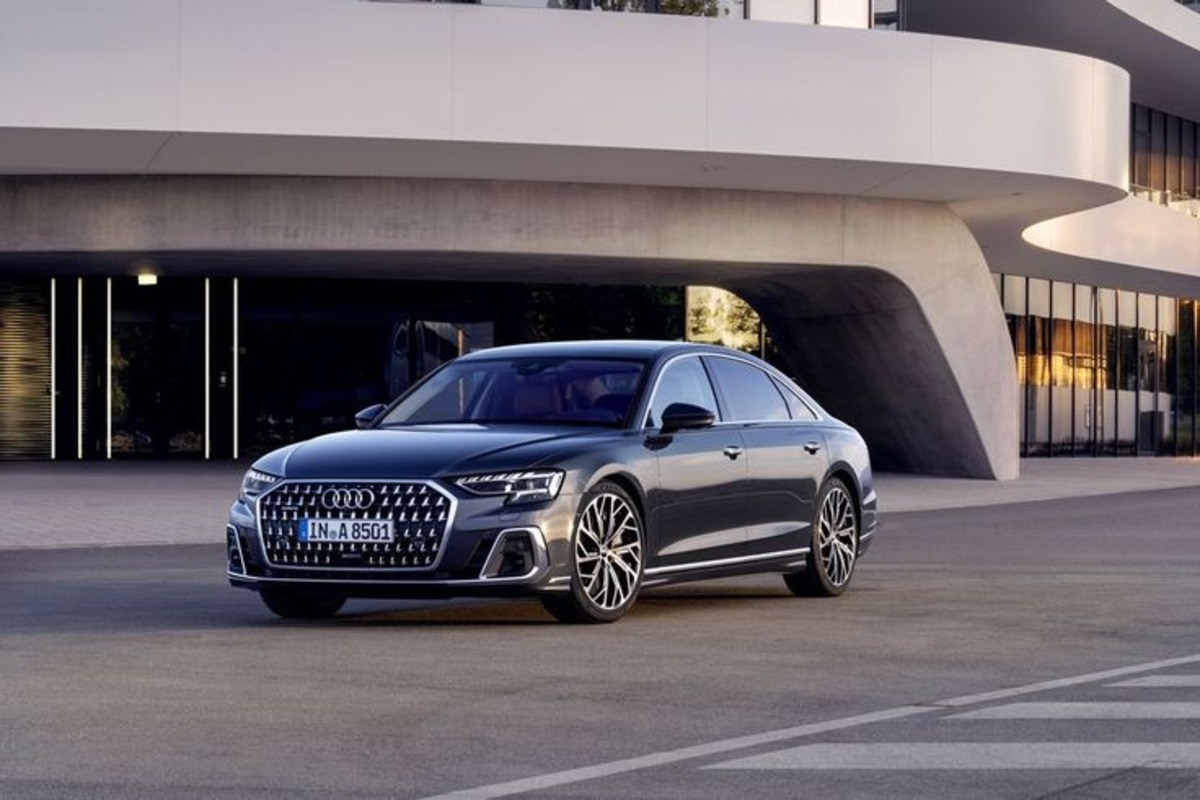
Technological integration is a hallmark of the A8’s interior longevity. The virtual cockpit and central infotainment system feature custom-designed OLED and LCDs protected by specialized glass that resists scratching and maintains optical clarity.
Electronic components are housed in shock-resistant, temperature-regulated enclosures that protect sensitive circuits from environmental stress. The entire electronic architecture is designed with multiple redundancy layers, ensuring consistent performance and reliability.
Seat engineering represents another area of exceptional innovation. Multi-layer construction combines advanced memory foam, adaptive support materials, and climate-controlled surfaces that protect both the occupant and the interior materials.
The seat mechanisms utilize precision-machined components with over 50,000 guaranteed operation cycles, maintaining structural integrity and preventing the sagging or mechanical wear common in lesser vehicles.
Acoustic engineering transforms the A8’s interior into a sound-isolated sanctuary. Multiple layers of sound-dampening materials, including specialized foam and vibration-absorbing compounds, create an environment that remains consistently quiet and free from structural resonances.
The windows use multi-layer acoustic glass that maintains sound isolation properties throughout the vehicle’s lifetime.
Audi’s modular design philosophy allows for strategic component replacement, extending the vehicle’s usable life.
Each interior element is designed with future maintenance in mind, using standardized connection points and easily accessible systems. This approach ensures that the A8’s interior can be maintained in near-original condition, reflecting Audi’s commitment to long-term quality and customer satisfaction.
6. Rolls-Royce Phantom
The Rolls-Royce Phantom represents the absolute zenith of automotive luxury, with an interior that transcends mere transportation to become a mobile work of art.
Each Phantom is essentially handcrafted, with interior components that reflect generations of artisanal expertise combined with cutting-edge technological innovation.
Material selection for the Phantom begins with a level of scrutiny that borders on obsession. Leather is sourced from single-origin hides, carefully selected to ensure uniformity and minimal imperfections.
The tanning process is a closely guarded Rolls-Royce tradition, involving multiple stages of treatment that transform the leather into a material of extraordinary durability and aesthetic appeal.
Each hide undergoes a specialized coating process that provides molecular-level protection against UV radiation, moisture, and physical wear.
Wood trim in the Phantom is not merely a decorative element but a testament to craftsmanship. Veneers are hand-selected from single trees, with grain patterns meticulously matched across different panels.
The wood undergoes multiple stages of treatment, including specialized lacquering processes that protect against scratching, fading, and environmental degradation. Some Phantoms feature wood trim that takes over 200 hours to complete, with each piece being a unique work of art.
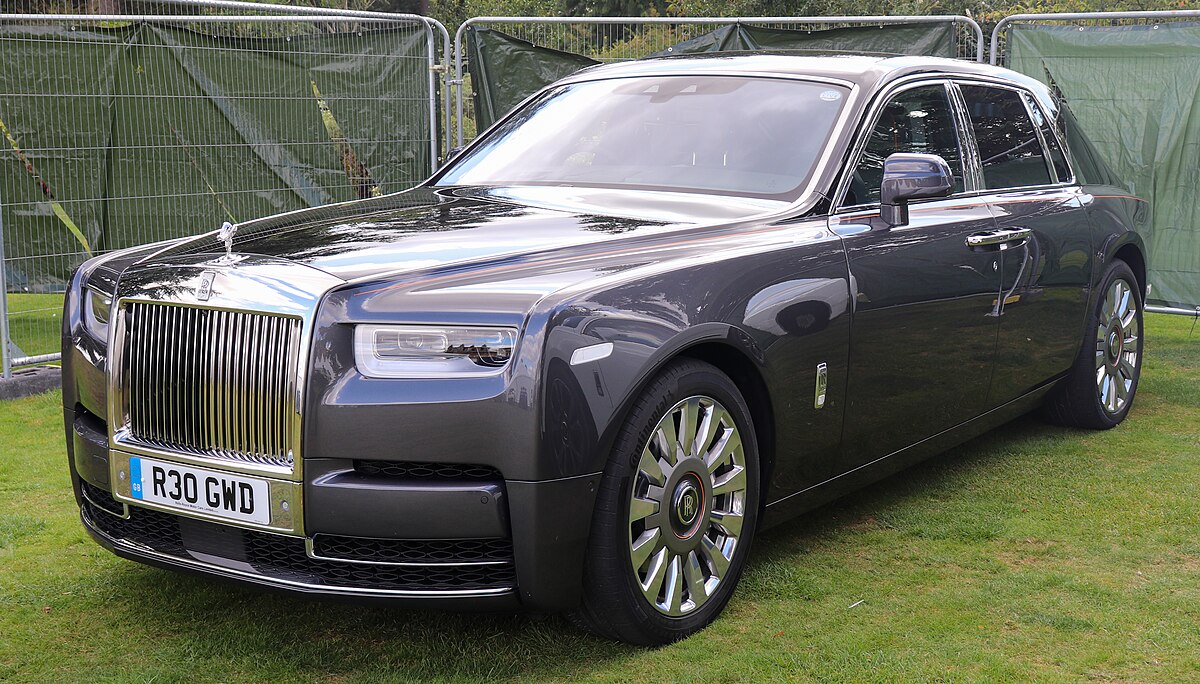
Technological integration in The Phantom is both subtle and sophisticated. Unlike many modern luxury vehicles, the Phantom’s technology is seamlessly integrated to maintain a classic aesthetic.
Custom-designed electronic components are housed in precision-engineered housings that protect against vibration and environmental stress. The infotainment system uses specialized displays with multiple protective layers that maintain optical clarity and resist scratching.
Seat engineering is a marvel of both comfort and durability. Multi-layer construction combines horsehair padding (a traditional Rolls-Royce technique), memory foam, and advanced textile technologies.
The seat mechanisms are built to industrial engineering standards, capable of maintaining structural integrity through decades of use. Climate-controlled surfaces incorporate advanced moisture-wicking technologies that protect both the leather and underlying structural components.
Acoustic engineering transforms the Phantom’s interior into an almost supernatural sound environment. Multiple layers of sound-dampening materials, including specialized foam and vibration-absorbing compounds, create an interior that is nearly silent under any driving condition.
The windows use multi-layer acoustic glass so advanced that they can reduce external noise to near-zero levels.
The modular design philosophy ensures that each Phantom can be maintained to near-original condition.
Rolls-Royce offers extensive maintenance programs that allow for strategic component replacement, reflecting the brand’s commitment to creating vehicles that can be cherished for generations.
7. Genesis G90
The Genesis G90 emerges as a remarkable testament to Korean automotive engineering, challenging established luxury brands with its exceptional interior quality and build durability.
This flagship sedan represents a perfect fusion of advanced technology, premium materials, and meticulous craftsmanship that belies its relatively young brand heritage.
Material selection for the G90 is a sophisticated process that prioritizes long-term durability and aesthetic excellence.
The leather used in the interior undergoes a comprehensive treatment process that goes beyond conventional automotive upholstery standards.
Each hide is carefully selected and treated with a multi-layer protective coating that resists UV damage, prevents color fading, and maintains its original softness and texture.
The result is an interior that appears timeless, resisting the typical wear and tear that affects lesser luxury vehicles. The dashboard and interior trim showcase Genesis’s commitment to precision engineering.
Utilizing a combination of high-grade aluminum alloys, specialized polymers, and composite materials, the G90’s interior components are designed to withstand extreme temperature variations and mechanical stress.
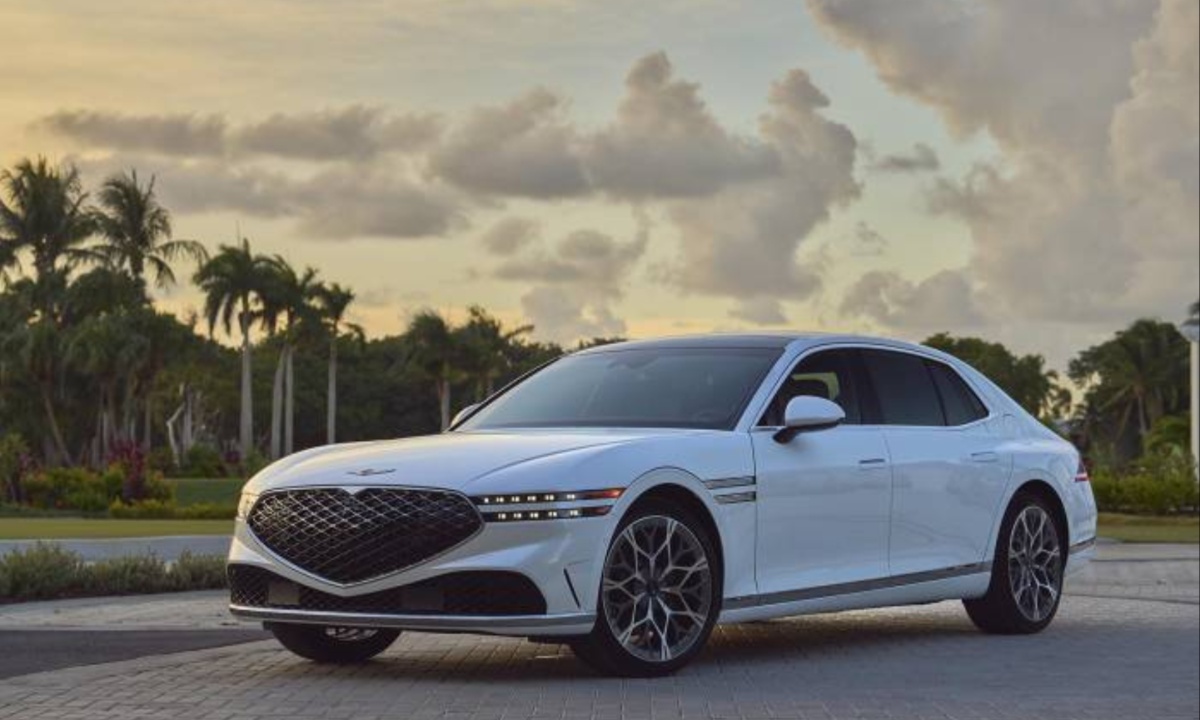
The panel gaps are measured with microscopic precision, creating a seamless interior that maintains its refined appearance even after years of use.
Technological integration is a standout feature of the G90’s interior durability. The infotainment and digital instrument cluster utilize custom-designed displays with specialized protective glass that resists scratching and maintains optical clarity.
Electronic components are housed in shock-resistant enclosures, protecting sensitive circuits from vibration and environmental stress. The entire electronic architecture is designed with multiple redundancy layers, ensuring consistent performance and reliability over extended periods.
Seat engineering represents another area of exceptional innovation. The multi-layer seat construction combines advanced memory foam, adaptive support materials, and climate-controlled surfaces.
Precision-engineered seat mechanisms are designed to withstand over 50,000 operation cycles, maintaining structural integrity and preventing the sagging or mechanical wear common in many luxury vehicles.
The ventilation and heating systems are strategically designed to protect both the leather and underlying structural components.
Acoustic engineering transforms the G90’s interior into a remarkably quiet sanctuary. Multiple layers of sound-dampening materials, including specialized foam and vibration-absorbing compounds, create an environment that remains consistently quiet under various driving conditions.
The windows use multi-layer acoustic glass that maintains superior sound isolation properties throughout the vehicle’s lifetime.
Genesis’s approach to interior design incorporates a modular philosophy that allows for strategic component replacement.
Each interior element is designed with future maintenance in mind, using standardized connection points and easily accessible systems.
This approach ensures that the G90’s interior can be maintained in near-original condition, reflecting the brand’s commitment to long-term quality and customer satisfaction.
8. Tesla Model S
The Tesla Model S represents a revolutionary approach to interior durability, challenging traditional automotive manufacturing with its minimalist, technology-driven design.
Unlike conventional luxury vehicles, the Model S interior is a testament to innovative material science and advanced electronic integration that prioritizes longevity and user experience.
Material selection for the Model S begins with a focus on sustainable and durable components. The interior utilizes advanced synthetic materials that offer superior resistance to wear, UV damage, and environmental stress.
Unlike traditional leather, Tesla employs high-grade synthetic surfaces that maintain their appearance and structural integrity with minimal maintenance.
The center console and dashboard use specialized polymers and composite materials that resist scratching, fading, and temperature-induced degradation.
The most striking aspect of the Model S interior is its minimalist design, centered around a massive central touchscreen that serves as the primary interface for nearly all vehicle functions.
This display is engineered with multiple protective layers, utilizing specialized glass that resists scratching and maintains optical clarity.
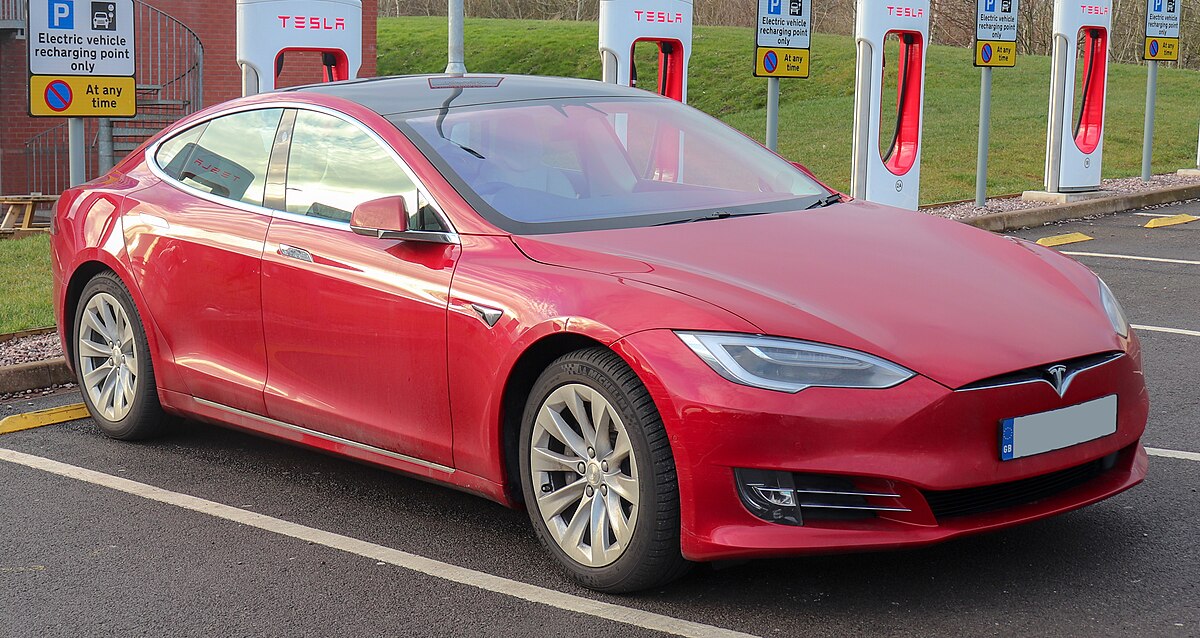
The electronic architecture is designed with extensive redundancy, ensuring that software and hardware components can be updated and maintained over the vehicle’s lifetime.
Seat engineering in the Model S takes a unique approach, utilizing lightweight materials that maintain structural integrity.
The seats combine advanced foam technologies with carefully engineered support structures that resist compression and maintain their shape over extended periods. Climate control systems are integrated directly into the seat design, preventing moisture accumulation and protecting the underlying materials.
Acoustic engineering in the Model S is fundamentally different from traditional vehicles. The absence of an internal combustion engine allows for unique sound-dampening strategies.
The cabin is designed to minimize road noise and vibration, using advanced materials and structural engineering techniques that create an exceptionally quiet interior environment.
The modular design of the Model S allows for significant interior upgrades through software updates and component replacements.
Tesla’s approach to vehicle maintenance emphasizes the ability to update and replace individual components, ensuring that the interior can be maintained and modernized throughout the vehicle’s lifetime.
9. Bentley Continental GT
The Bentley Continental GT represents the pinnacle of British luxury automotive craftsmanship, with an interior that epitomizes opulence and unparalleled durability.
Each Continental GT is essentially a rolling masterpiece of design and engineering, where every interior component is meticulously crafted to withstand decades of use while maintaining its original magnificence.
Material selection for the Continental GT transcends conventional automotive standards. The leather used in the interior is sourced from the most carefully selected hides, undergoing a multi-stage preparation process that transforms each piece into a virtually indestructible surface.
Bentley’s leather artisans employ a proprietary tanning and treatment method that creates a molecular barrier against UV radiation, moisture, and physical abrasion. Each hide is hand-selected, with imperfections meticulously removed, ensuring a uniform and extraordinarily resilient interior surface.
The wood trim represents another hallmark of the Continental GT’s interior durability. Veneers are sourced from carefully selected single trees, with grain patterns matched with such precision that each panel appears to be a continuous piece of wood.
The wooden surfaces undergo multiple layers of specialized lacquering, creating a protective coating that resists scratching, fading, and environmental degradation. Some interior wood elements require over 100 hours of specialized craftsmanship to complete.
Technological integration in the Continental GT is both sophisticated and subtle. The infotainment and digital displays utilize custom-designed screens with multiple protective layers of specialized glass.
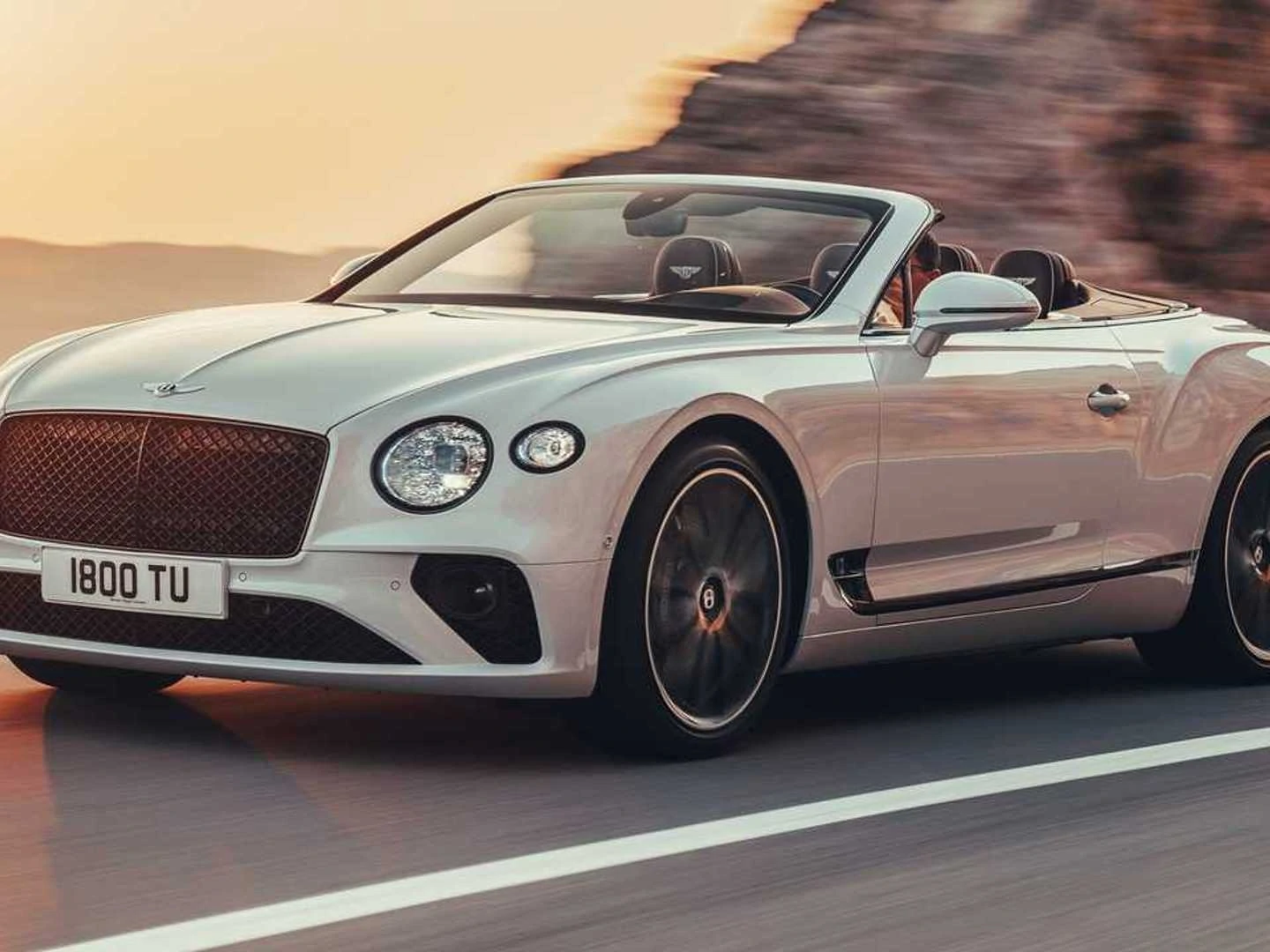
These displays are engineered to maintain optical clarity and resist scratching, with electronic components housed in precision-engineered enclosures that protect against vibration, temperature fluctuations, and electromagnetic interference.
Seat engineering reaches new heights of technological sophistication. Multi-layer seat construction combines traditional craftsmanship with advanced material science.
Memory foam, adaptive support materials, and climate-controlled surfaces are integrated to create seats that maintain their structural integrity and comfort over decades of use.
The seat mechanisms are precision-engineered to withstand over 75,000 operation cycles, preventing sagging or mechanical wear.
Acoustic engineering transforms the Continental GT’s interior into an extraordinary sound-isolated environment. Multiple layers of sound-dampening materials, including specialized foam and vibration-absorbing compounds, create a cabin that remains consistently quiet under any driving condition.
The windows use multi-layer acoustic glass with extraordinary sound isolation properties, creating a sanctuary of tranquility.
Bentley’s modular design philosophy ensures that each Continental GT can be maintained in near-original condition.
The brand offers extensive maintenance programs that allow for strategic component replacement, reflecting a commitment to creating vehicles that can be cherished for generations.
10. Range Rover
The Range Rover represents the ultimate expression of luxury SUV engineering, with an interior that combines rugged durability with unparalleled sophistication.
Land Rover’s flagship model transcends traditional automotive design, creating an interior that can withstand extreme environmental conditions while maintaining the refinement of a high-end luxury vehicle.
Material selection for the Range Rover begins with an understanding of its unique positioning between luxury and adventure.
The leather used in the interior undergoes an intensive preparation process that goes beyond conventional automotive upholstery. Each hide is treated with a specialized coating that provides molecular-level protection against UV radiation, moisture, and physical wear.
The leather is designed to maintain its suppleness and appearance in environments ranging from arctic cold to desert heat. Interior trim components utilize a combination of advanced materials that provide exceptional durability.
High-grade aluminum alloys, carbon fiber-reinforced polymers, and specialized composite materials are carefully selected to resist temperature fluctuations, mechanical stress, and environmental challenges.
The precision of manufacturing ensures that panel gaps remain consistent, preventing rattles and maintaining a premium feel even after extensive use in challenging conditions.
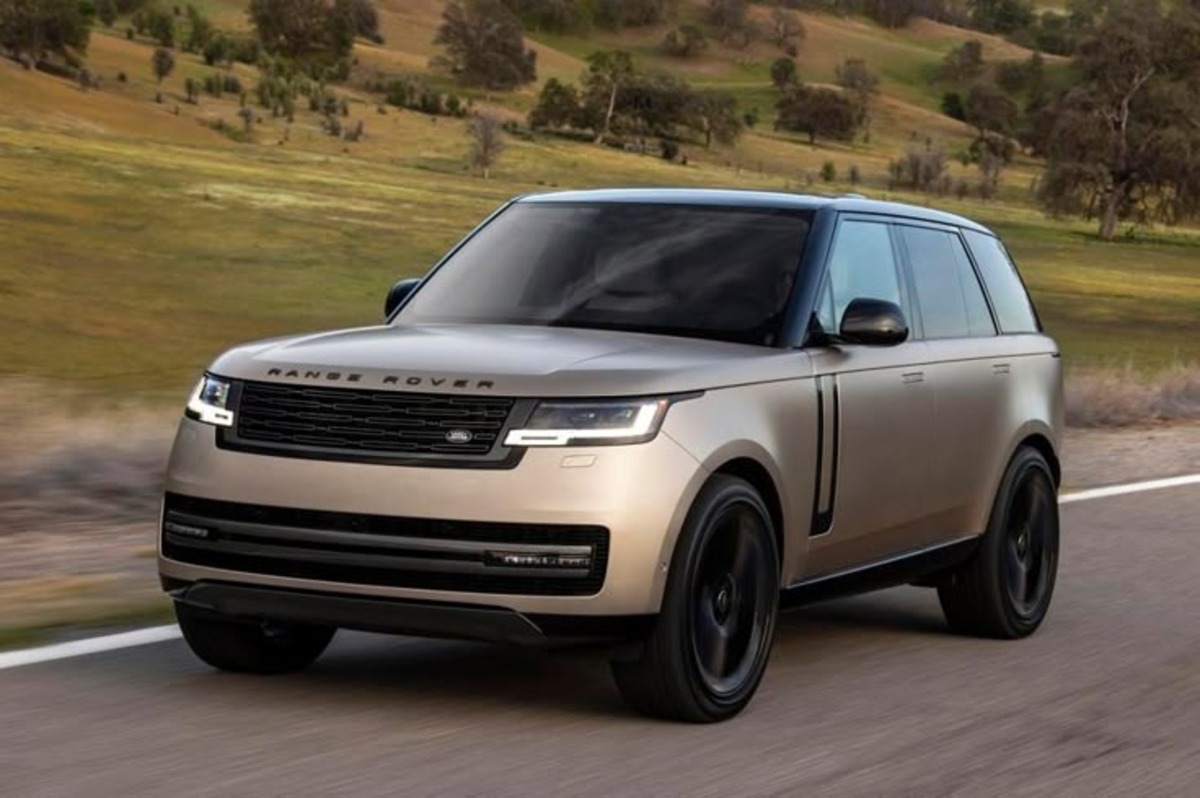
Technological integration in the Range Rover is both sophisticated and robust. The infotainment and digital instrument clusters use specialized displays with multiple protective layers that maintain optical clarity and resist scratching.
Electronic components are housed in ruggedized enclosures that protect against vibration, moisture, and extreme temperature variations. The entire electronic architecture is designed with multiple redundancy layers, ensuring consistent performance under any conditions.
Seat engineering represents a remarkable achievement in comfort and durability. Multi-layer seat construction combines advanced memory foam, adaptive support materials, and climate-controlled surfaces.
The seats are designed to provide exceptional support in both on-road luxury and off-road adventure scenarios. Precision-engineered seat mechanisms can withstand over 60,000 operation cycles, maintaining structural integrity in diverse environmental conditions.
Acoustic engineering creates an extraordinary interior environment that remains consistent regardless of external conditions.
Multiple layers of sound-dampening materials, including specialized foam and vibration-absorbing compounds, ensure that the cabin remains quiet and comfortable whether going through city streets or traversing challenging terrain.
The modular design philosophy allows for strategic component replacement, extending the vehicle’s usable life. Each interior element is designed with future maintenance in mind, using standardized connection points and easily accessible systems.
Also Read: 12 Sports Luxury Cars That Have the Most Durable Powertrains

